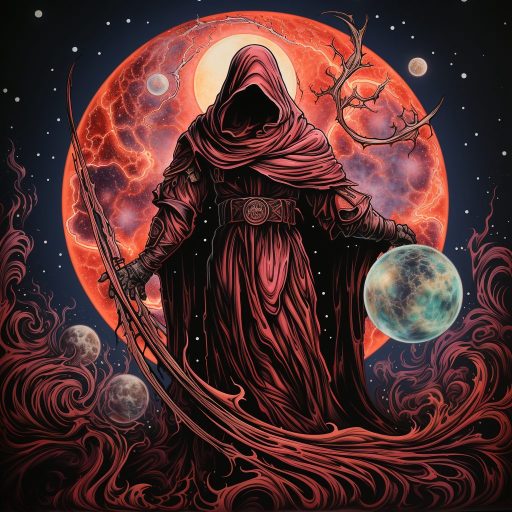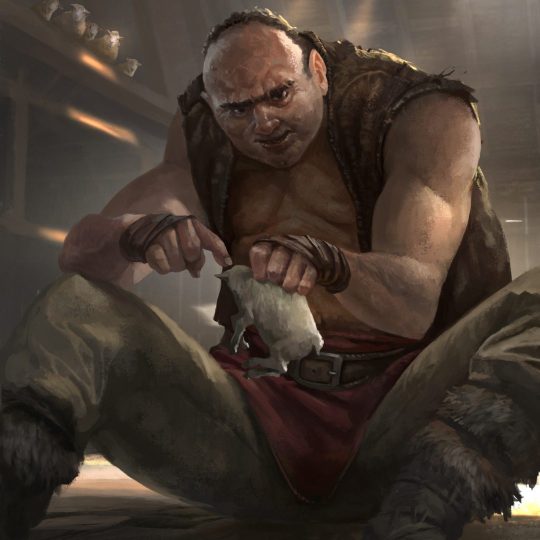
5 Tips for How to Run Games for Larger Groups
How many players are in your Dungeons & Dragons group? While some struggle to find anyone to play with my experience is the vast majority of us are forced to turn others away who want to play, just due to sheer numbers. With tabletop roleplaying games more popular than ever, large gaming tables are the new standard. There are a variety of hiccups and bumps on the road stemming from a larger gaming group, and while the glamour of streamed games like Critical Role might suggest running a large group is easy it’s important to remember many productions of D&D games have entire crews behind the scenes, ensuring that everything runs smoothly.
Running effective RPGs for large groups
Speaking from my own experience most of my games are run with 6-10 players. As a Dungeon Master I even prefer running bigger groups, regardless of system. However, there are definitely key elements to running an effective game with a larger party. So let’s talk about five key elements of running effective games for large groups of players.
Preparation is key
While experienced DMs may find running games on the fly fairly easy, bear in mind preparation is even more important in a larger group. I’m talking preparation with a larger scope. Specifically, when you have 6 or more players that’s a lot of backstories to manage, and more narrative driven groups will find it does take longer to tell a story with more people (more on that later). Planning key plot points that can flexibly be added to your story is essential. Being flexible and mobile with where these plot points can happen is crucial for success.
Session zeroes are invaluable for large group play, but just as valuable can be speaking with your players one-on-one outside of the game. Get a good feel for what your players envision with their characters’ individual arcs. Look for key themes and similarities that can be incorporated into your players’ stories and possibly tie them together more closely.
The key to this step is listening to your players, then tooling your plot to accommodate the various backstories and aspirations.
Split the party!
Normally, this is a huge no-no in TTRPGs. There are whole songs across YouTube dedicated to how bad of an idea it is to split your party. However, when you have six or more players splitting the party for encounters can let each player feel like they have time to shine. And because different things are happening to different people it keeps the story engaging for the whole group. This works much better than having people sitting around the same combat, waiting for their turn to swing and hit or miss, then moving on.
By splitting the party into smaller groups for roleplaying it makes everything more manageable, as people aren’t competing to talk to the NPC. Additionally, by splitting the party not everyone’s character is aware of what’s happening in game but the players will still pay attention. This offers opportunities for players to convey things in character. Many times, my own players will say at the end of an in game day that they come together and, “I tell them what happened today.” This incentivizes players to pay attention when their character isn’t directly involved as the information will likely be conveyed later.
Another fun thing to do when splitting the party is to incorporate Legend of Zelda-esque puzzles into combats, where only certain characters are capable of dealing direct damage to the enemy, but a second and (sometimes) third group must split off to trigger a switch or otherwise perform a task only those characters can, creating an opening to defeat the enemy. This helps everyone feel like their character is important and integral to the fight, without excessive “roll to attack, roll damage” monotony.
Time management is crucial
It’s only natural that certain groups will have players who tend to shine in the spotlight more often than others. Some players might relish avoiding the limelight but others desire their chance to shine, struggling to express it. When running a game for a larger group it’s easy for some players to tend toward falling through the cracks. This isn’t only true of overarching plots, either. It’s extremely easy for a DM to slip into allowing this from moment to moment.
One thing I’ve found that helps to mitigate this is to keep a timer, usually 5-10 minutes, for each scene involving individual characters or split groups of characters. Remember how we mentioned it takes longer to tell a story with a larger group? Keeping this timer allows for scene jumping, with the promise that the narrative will return to the scene. Just because the timer runs out doesn’t mean a scene is ove, it just means it’s time to break to a new scene, much as many television shows do. This keeps the narrative engaging and fast paced, ensuring a tighter grip on your players’ attention spans.
Mitigate table talk
Table talk is any time conversation happens during a game that isn’t dialogue or exposition directly pertaining to the narrative. Rules discussion also falls under this umbrella. Asking a single question is fine, but arguing or having full blown discussion about a single scenario bogs down the narrative pace and pulls the focus away from the group, to a single player’s solitary character action. Doing this feels like a disrespect of the other players’ time and fun.
Instead opt for quick, off-the-cuff rules calls. Even if you make a mistake as a DM, don’t go back on it and don’t entertain discussion or retroactive restructuring of the story because this drags your narrative to a snail’s pace. If you realize you made a mistake, own up to it after the game is done or at the beginning of the next session before play starts. This keeps your game moving and mitigates frustrations about boring game sessions.
Also, make sure to explain this is the expectation up front, as in session zero. As soon as this is implemented, communicate it to your players, explaining why you’re doing it this way. When you explain it’s for the fun of everyone and to tell a better story, players are a lot more willing to go with it.
Encourage working together with the Rule of Cool!
Playing with large groups can be a ton of fun, and this can be augmented by allowing characters to perform maneuvers or stunts that might only be possible with multiple characters working together. Even if the stunt or maneuver is a little weird, unprecedented or questionable, listen to how your players explain the way it works. Try to say yes or otherwise compromise on the rules to allow for things like this. This not only fosters camaraderie among the characters, but it also lets multiple players feel special at once. Team work makes the dream work as they say, and by facilitating this in your games it makes for a funner, more engaging experience for everyone.
What do you think?
Do you play in a large group, or do you run sessions for a large group? How do you keep everyone engaged? Let us know in the comments! Be sure to follow our blog and keep coming back for more tips on how to make your TTRPGs epic!









No Comments